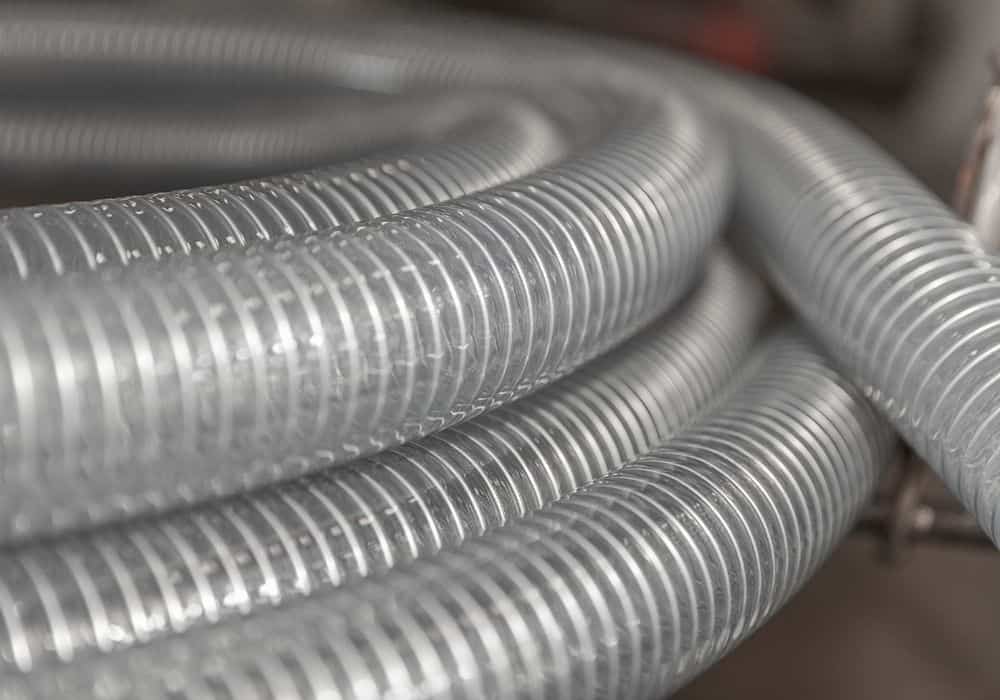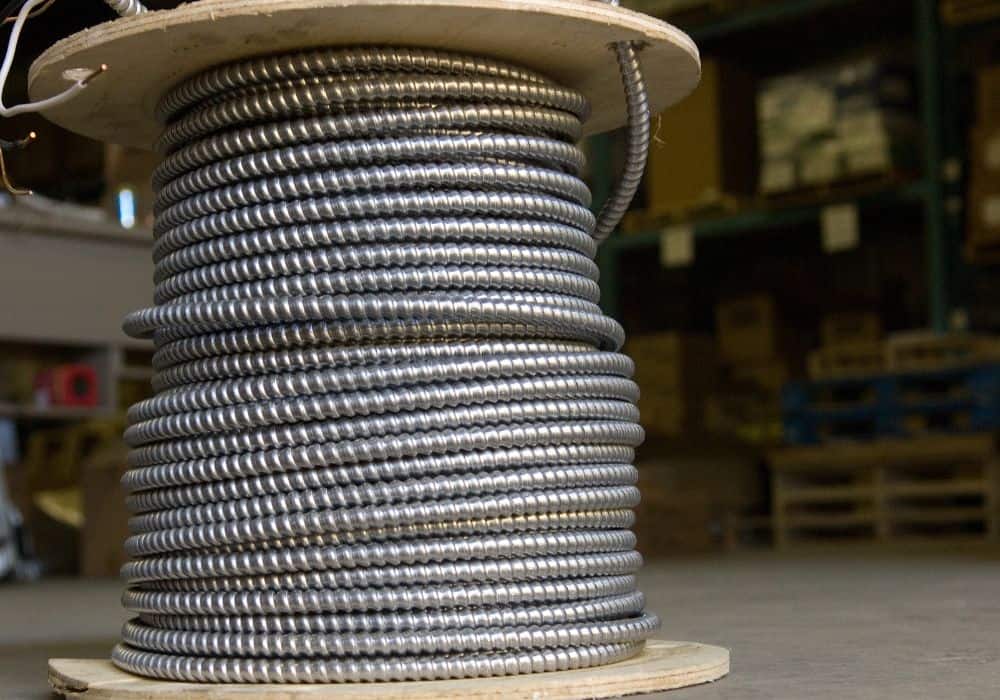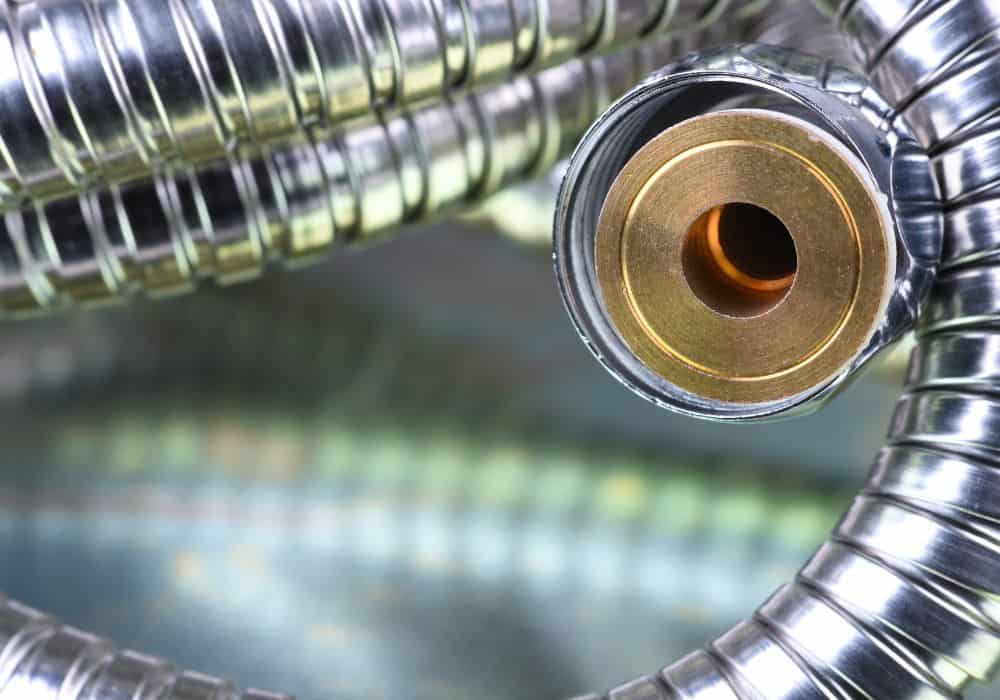If you’re new to the world of piping or plumbing, you may be wondering: “What is CSST pipe?”
Long story short, it refers to corrugated stainless steel tubing.
Below, I’ll discuss this flexible gas piping system in detail. I’ll be covering its history, its pros/cons, and more importantly, its strict installation guidelines.
Let’s begin!
What is CSST Pipe?
CSST or Corrugated stainless steel tubing is a flexible pipe for supplying natural gas in residential, commercial, and industrial structures.
The patented CSST innovation was first developed in Japan in the 1980s. It was deemed ‘safer’ since it was more flexible than black iron pipes.
The latter are known to break and start fires during earthquakes, which occur approximately 1,500 times a year in Japan.
Seeing this benefit, the Gas Research Institute started to explore the use of CSST fitting in the United States. This brought forth the AGA LC-1 1987 Proposed Standard for Interior Fuel Gas Piping Utilizing CSST.
This, later on, became the National Consensus Standard: ANSI LC-1, which was launched in 1990.
Following the release of ANSI LC-1, CSST sales started skyrocketing in the US. In fact, during its launch year, as much as 100,000 sq. ft. of pipes were sold.
Fast forward to 2012, as many as 700 million homes in the US have been fitted with CSST pipes. This demand continues, with as many as 500,000 CSST pipes being installed in the US every year.
Given these numbers, experts estimate that there are 8 million homes in the US using one billion feet of CSST pipes.

CSST Pipe Specifications
CSST pipes come in different makes. That said, they all offer the following specifications that make this tubing vastly popular throughout the years:
- Sizes available: 3/8″, 1/2″, 3/4″, 1″, 1-1/4″, 1-1/2″, and 2″
- Approved Operating Pressure: 5 psi
- Tubing Minimum Burst Pressure: 1500 psi
- Operating Temperature Range: -40°F to 205°F
- Tubing Melting Point: 2400°F
- Jacket Melting Point: 350°F
Yellow vs. Black Coating
CSST is characterized by a yellow coating, although some pipes also have a black exterior. The yellow color was introduced in the US in the 1990s to identify it as a gas line.
The black coating, which indicates the pipe’s protective jacket, was only introduced in 2005. Also known as arc-resistant CSST, it provides an additional level of lightning protection.
According to Tracpipe, this coating makes this pipe 400 times more resistant to electrical damage. Given these features, most black-coated CSST pipes meet the standards of ANSI LC1 Section 5.16: Arc Resistant Jacket or Covering System.
Apart from being ground-resistant, the newer black-coated pipes pull easier and lay straighter too. Obviously, these make black-coated CSST pipes the top choice.
That being said, the grounding system requirements in black-coated pipes (compared to the yellow ones) may not meet local code guidelines. The latter are governing, and as such, should be followed.
CSST Pipe vs. Gas Appliance Connector
Because of its yellow color, a CSST pipe can be easily confused with a gas appliance connector. These short pieces (usually measuring 3/8″ to 5/8″) are used to attach appliances to the pipe system. They have pronounced ribs you can see and feel.
Unless the tag has been removed, you’ll see one on the connector as well.
CSST, on the other hand, is larger and often comes in rolls (as long as a hundred feet!) Their ribs are not as pronounced, compared to what you’ll see on connectors.
Most importantly, CSST pipes meet the ANSI LC-1 standard, which is different from those followed in flexible appliance connectors. The latter follows the ANSI Z21.24 standard, which you’ll find stamped on the connector’s nut head.
In contrast, you won’t find a tag or ANSI markings on a CSST tube.
What are the Advantages and Disadvantages of CSST Pipe?

Advantages
CSST gas piping is preferred by many builders (and consumers) because of these advantages:
- Flexibility
Being a flexible gas line, CSST may be installed practically anywhere.
It can be routed inside interior wall cavities, on top of ceiling joists, along/through basement floor joists, and underneath buildings. It may even be connected to water heaters and other fixed gas appliances.
- Fewer Leaks
A CSST gas line has 75% fewer joints or connections than black iron pipes, which means it has a lower gas leak risk compared to other metal pipes.
This makes it superior to iron pipes, which need to be checked and fitted every time they need to be re-installed in another direction.
- Easy to Install
This flexible gas line is easy to install – as long as it is affixed following the CSST manufacturers’ instructions.
According to the CSST Safety website, it can be installed in 1/3 of the time it takes to place iron pipes. After all, rigid gas pipes need to be measured, cut, reamed, threaded, cleaned and screwed together.
CSST pipes also come with pre-marked segments, which reduces the time the contractor needs to measure such pipes. In fact, all you need when installing is a tubing cutter, a utility knife, and a wrench.
Disadvantages
- Susceptibility to Lightning Strikes (Earlier Installations)
Lightning can strike the structure directly and cause a fire.
And even if lightning has only struck nearby, it can potentially damage the tubing. It can render the pipe electrically energized, which can then puncture a hole and cause a fire.
Do note that this is more common in homes built between 1996 to 2006, as the National Electrical Code requirements for CSST tubing were not implemented until then.
- Expensive
CSST pipes are more expensive than copper or black iron pipes. But if you consider the cost of installation and labor, CSST proves to be cheaper than the latter.
- Not Readily Available
Compared to most metal pipes, CSST is not readily available in home improvement stores. This is with good reason though, for this kind of piping is best installed by a trained professional.
CSST Pipe Installation Guidelines

1. Placement
Generally, CSST pipes should NOT be spliced. They should be installed at least six inches away from:
- House wiring within a wall cavity
- Electrical service wiring
- Communication wiring
- HVAC ducts
- Metal electrical fixture boxes and their supports
- Any material that may cause grounding
In the case of hybrid systems, CSST pipes should not go through walls.
2. Direct Bonding
Direct bonding is crucial because it secures continuity and conductivity, thus protecting your yellow stainless steel pipe.
So if you need to have your CSST pipe installed and reinstalled, the most important thing is to use a minimum 6-gauge bonding wire. That’s because a grounded conductor can help reduce the charge from 97% to a lowly 20%.
This should be placed between the pipe and the structure’s grounding electrode to prevent fire or gas leaks stemming from a lightning strike.
If you wish to know more about this process, then make sure to watch this informative video on how to bond your CSST pipes.
If you’re not sure if your CSST pipe is protected from an electrical ground – or if your home has been built before 2006 – then it will be best to call a licensed electrician.
The home inspector can make the necessary recommendations and fixes, e.g., replacing the damaged outer covering.
3. Placements
Although CSST pipes may be installed in various locations, they may not be placed in/on the following areas:
- Space between roof rafters
- Between the rafters of the roof deck side of the insulation
- Attic spaces (passing through the exterior wall’s top plate)
- Ceiling joist’s top side
4. Protection
Grounding your CSST pipes may be your primary concern, but you will also need to protect them from:
- Concrete
Concrete can damage the flexible steel tubing. So when running this line through slabs and foundations, you will need to protect it with a plastic conduit.
- Nails and Screws
Like iron or copper pipes, CSST pipes may be punctured by nails and screws. To prevent this from happening, you will need to use:
Hardened nail plates: This is recommended in areas where CSST passes through wood framing or if the pipe is located less than 3 inches away from cavities.
Flexible steel conduit: This is needed in ‘floppy areas’ where CSST pipes supplying gas or propane cannot be secured from cavities.
5. Support
CSST pipes need support as well. Depending on the jurisdiction and the pipe rigidity/diameter, you may need to place supports at certain distances.
Hangers, bands, or pipe straps should be placed:
- Every 4 feet for a 3/8-inch pipe
- Every 6 feet for a 1/2-inch pipe
- Every 8 feet for larger CSST pipes
As for pipes placed on top of ceiling joists, they need to be fitted with horizontal supports as well.
Conclusion
CSST corrugated stainless steel tubing is a flexible pipe that’s used to supply natural gas in residential and commercial structures. First developed in the 1980s, it is characterized by a yellow or black coating.
CSST remains popular because of its flexibility, easy installation, and reduced leakage risk. Although they may burst and cause fires due to a lightning strike, these may be prevented with direct bonding.
Have more questions about CSST pipes? Post a question and I’ll answer it to the best of my knowledge below!
